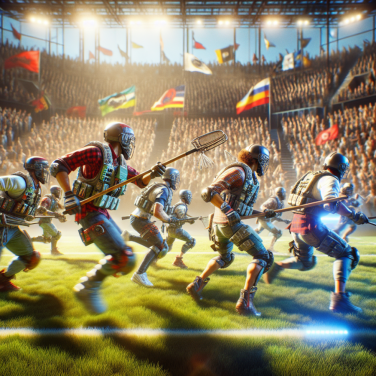Mastering Basic Techniques and Tricks of Snowboarding
When venturing into the thrilling world of snowboarding, mastering basic techniques and tricks is a must. The ability to conquer slopes with grace and prowess stems from a strong foundation in core boarding skills. This article walks you through the indispensable techniques for not just bracing the snow with your board, but owning it.
To begin with, one must understand and dominate the art of standing right. The first rule is easy: always keep your body relaxed, even if you feel like you're in the middle of an intense workout. Stand up straight, with your knees relatively relaxed. Never forget to maintain a slight bend in them.
Snowboarding isn’t just about one-foot gliding. Learning to ride with both feet strapped into your board is synonymous with acquiring the perfect balance which is integral to snowboarding mastery. It trains you to navigate across flat terrains and helps you to feel comfortable with putting your weight on either foot.
A pivotal technique, often underrated, is learning how to use a snowboard's edges. This heavily influences your speed and direction. If you're looking to slow-down or stop, it's the heels you must lean on. Whereas, for acceleration, the toes come into play.
Perfecting turns aids your overall snowboarding experience. Practicing linked turns, s-turns, and carves can significantly augment your skills. Remember to use your torso and knees more than your hips when turning. Smooth turns are also about being comfortable shifting your weight between your toes and heels.
Even with these carefully mastered techniques, falls are inevitable. Learning to fall rightly can significantly mitigate the risk of injury. If you are falling forward, aim to fall onto your forearms, not your hands. If you're falling backward, try to fall onto your bum while tucking your chin into your chest to avoid whipping your head against the snow.
Moving on to tricks, snowboarding has hundreds to choose from. Start with grabs; they're basic, yet impressive. Learn to grab your snowboard in the air. There are multiple grab spots on a snowboard, and each one creates a unique look and challenge.
Butter tricks are another beginner-friendly option. These are done on the ground and involve twisting the board around. The basics to focus on when learning to butter include 180 degrees backside and frontside.
Finally, there are the jumps. Small jumps are a good starting point. Master the timing and pop off the lip of the jump to get both feet above the ground.
Read also:
Ultimate Guide to Mastering KanJam: Tips and Strategies"
Essential Equipment for Successful Snowboarding
Snowboarding is not just about picking up a board and sliding down a hill. Seeing success on the slopes depends on various factors, but right on top of that list is the proper equipment. The type of gear you use can make or break your snowboarding experience, from your board to your bindings, boots, and the right clothing.
The first essential piece of equipment for successful snowboarding is, of course, the snowboard itself. Snowboards come in different styles, designed for various types of riding. For beginners, all-mountain boards are highly recommended as they offer versatility and are good for any riding style. The size of the board also matters. It must match your height, weight, and foot size to offer you a comfortable and controlled ride.
Next up are the snowboarding boots and bindings. Boots should provide both comfort and proper support. They must fit well to avoid discomfort and possible injuries. More than providing cushion, snowboarding boots must also assist in effectively transferring your body weight to the board. Bindings link your boots to the board. Your choice usually depends on the type of riding you'll do. Some bindings allow for a more flexible movement, while others offer a stiff and secure feel.
Protective gear is also an important element. Helmets and goggles aren't just for professional or extreme riders. Helmets prevent serious head injuries, and goggles protect your eyes from the sun’s glare off the snow and from wind that freezes your cornea.
Next is the right clothing. Dressing appropriately is a crucial factor in successful snowboarding. Snowboarding clothing is generally made to be waterproof and breathable to remove moisture. Layering is also recommended as it allows for easy adjustment to changing weather conditions on the slopes. Heated clothing is a nice-to-have, especially for those incredibly chilly days.
Don't forget gloves and socks. Get a quality pair of gloves that are waterproof, insulated, and have a good grip. Socks, on the other hand, should be warm and moisture-wicking. Avoid cotton as it gets damp and cold.
Then there are miscellaneous essentials. These include a snowboarding backpack, where you can keep your tools, extra lenses for your goggles, or a change of clothes. Also important are the hydration packs or thermoses as you need to stay hydrated while riding.
Lastly, have an avalanche safety kit. Up in the mountains, one can never be too careful. Equip yourself with an avalanche beacon, a probe, and a shovel.




